No products in the cart.
Return To Shop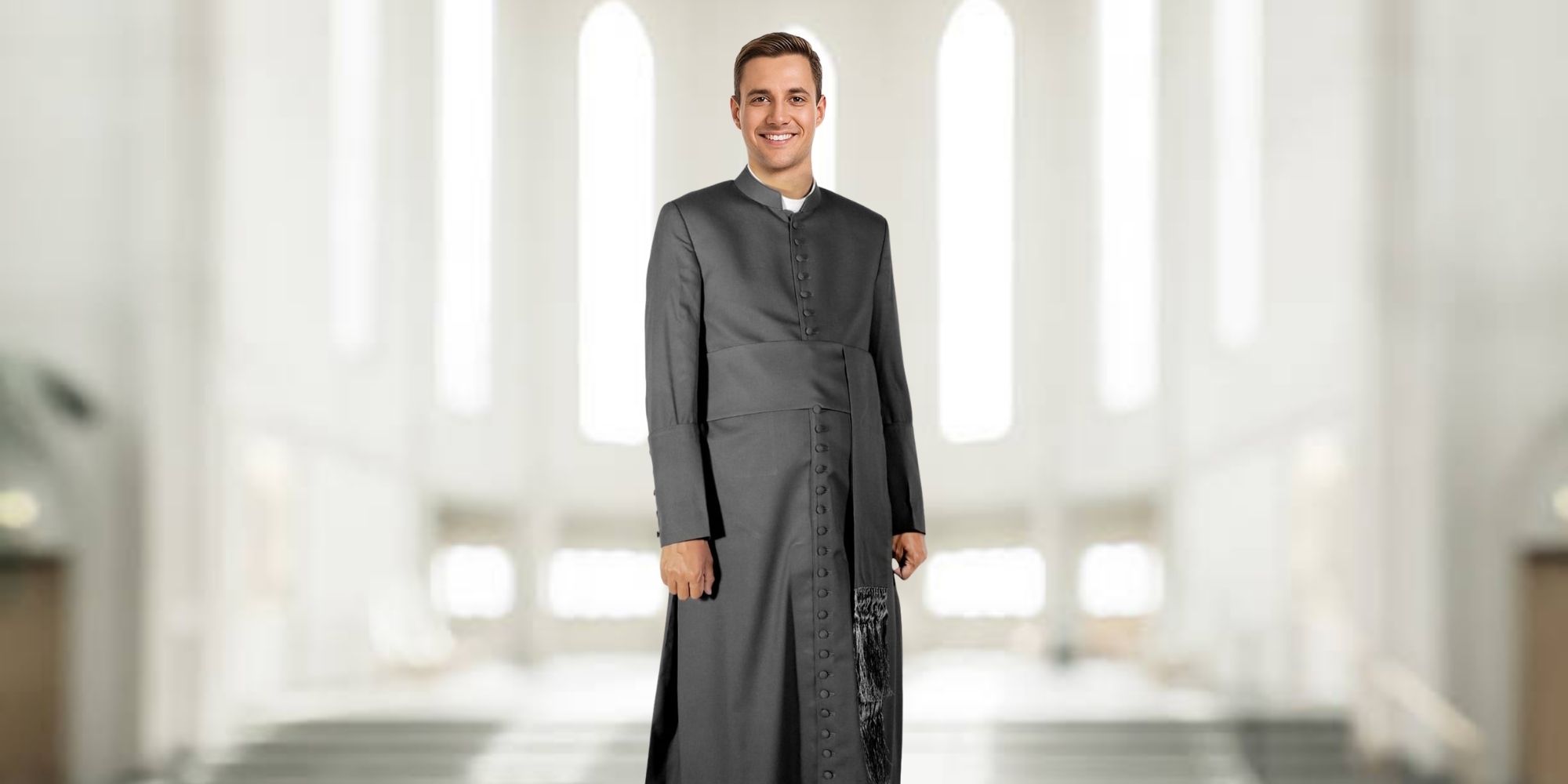
Understanding the Priest Cassock & Robe
The attire of a priest is far more than simple clothing—it is a visible expression of faith, humility, and dedication to spiritual service. Known collectively as the priest outfit, this attire has evolved over centuries yet still retains deep symbolic meaning in Christian traditions. Two of the most iconic garments in a priest’s wardrobe are the priest cassock and the priest robe. Whether you’ve seen them in liturgical celebrations, processions, or everyday clerical duties, these garments carry a rich history worth exploring.
In this guide, we will take a closer look at each part of the priest outfit, its history, variations, and significance in different denominations.
What Is a Priest Outfit?
A priest outfit refers to the distinctive set of
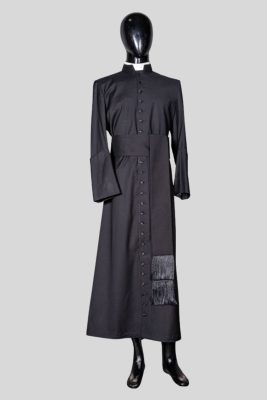
Black Priest Cassock
garments traditionally worn by ordained clergy members, both during religious services and, in some cases, as part of their daily ministry attire. This sacred clothing is not merely functional—it carries deep spiritual symbolism, reflecting a life dedicated to faith, service, and the teachings of the Church.
The priest outfit can include formal liturgical vestments for worship as well as clerical attire worn outside the sanctuary for pastoral duties. While designs, fabrics, and colors may vary across Christian traditions, several core elements are widely recognized:
- Priest Cassock: A long, close-fitting garment, most often black, symbolizing humility, devotion, and a separation from worldly distractions. In some traditions, the cassock may feature special trim or button counts representing theological meanings.
- Priest Robe: A flowing ceremonial outer garment, often worn over other vestments during liturgical functions. Priest robes may be crafted in various colors according to the liturgical calendar, each carrying symbolic significance.
- Clerical Collar: A stiff white collar worn around the neck, representing the priest’s spiritual commitment and visible role as a servant of God.
- Accessories & Vestments: Additional elements such as stoles (symbolizing ordained ministry), cinctures (a cord or sash for securing robes), and chasubles (outer garments worn during the Eucharist) complete the priest’s ceremonial attire.
Together, these garments create a visual expression of sacred duty, uniting centuries of Christian tradition with the priest’s ongoing mission to serve the Church and its people..
The Priest Cassock: History and Significance
The priest cassock is one of the most iconic and easily recognizable garments in Christian clergy attire. Traditionally tailored from black fabric, this long, close-fitting robe extends from the shoulders to the ankles, creating a dignified and formal appearance that has stood the test of centuries.
Origins of the Cassock
The history of the cassock dates back to the early centuries of the Church, when clergy members adopted long tunics similar to the Roman subucula. Over time, these tunics evolved into a distinctive clerical garment worn exclusively by ordained ministers. Its design symbolized a clear separation from secular life, marking the wearer as someone dedicated to the service of God and the Church.
Symbolism of the Cassock
The priest cassock is rich in symbolism, with every detail carrying spiritual meaning:
- Black Color Represents humility, penitence, and detachment from worldly pleasures.
- Buttons In Roman Catholic tradition, the 33 buttons down the front represent the number of years in Jesus Christ’s earthly life.
- Simplicity Reflects the vow of poverty and the priest’s devotion to ministry and service over personal luxury.
Variations in the Cassock
While the general style remains similar, the cassock varies across denominations:
- Roman Catholic Cassock Typically black, paired with a colored sash (cincture) that denotes rank: purple for bishops, red for cardinals, and black for priests.
- Anglican Cassock Often features 39 buttons, symbolizing the 39 Articles of Religion in the Anglican tradition.
- Eastern Orthodox Cassock Known as a rason or anteri, this style is often looser and can feature ornate detailing, depending on the tradition and region.
The cassock remains more than a piece of clothing—it is a visual expression of faith, discipline, and the sacred calling of the priesthood.
The Priest Robe: Liturgical Vestment of Honor
While the cassock is often worn as daily clerical wear, the priest robe is typically a ceremonial vestment used during Mass, Eucharist, and other sacred rites.
Design and Features
- Length: Floor-length for dignity and formality.
- Fabric: High-quality materials like polyester blends, wool, or silk for special occasions.
- Colors: Vary according to the liturgical calendar white for Easter, red for Pentecost, purple for Advent and Lent, green for Ordinary Time.
Symbolism of the Robe
The priest robe signifies the sacred role of the celebrant, setting them apart for the act of worship. Its color changes convey theological meaning and align with the church calendar.
Other Key Elements of the Priest Outfit
While the priest cassock and priest robe are the most prominent garments, a complete priest outfit often includes several other important pieces. Each item carries its own history, symbolism, and role in church tradition.
Clerical Collar
The clerical collar is a distinctive white band worn at the neck, either with a black shirt or integrated into the cassock. It serves as a visible sign of priestly identity, symbolizing commitment to ministry and dedication to serving God’s people.
Alb
The alb is a long, white tunic that reaches the ankles, typically worn beneath the chasuble or stole. Its pure white color represents spiritual cleanliness and purity of heart, reminding the celebrant of their call to holiness.
Stole
A long, narrow strip of fabric worn around the neck and hanging down the front, the stole is a key vestment for ordained ministry. It symbolizes the yoke of Christ and the priest’s sacred duty to shepherd the faithful.
Chasuble
The chasuble is a sleeveless, outer vestment worn during the celebration of the Mass. Flowing and ornate, it is worn over the alb and stole, representing the virtue of charity and the priest’s role as a vessel of God’s love.
Cincture
The cincture is a cord or sash tied around the waist to secure the alb or cassock. Beyond its practical purpose, it symbolizes chastity, self-control, and readiness for service.
Together, these elements complete the priest outfit, enhancing both the ceremonial dignity and the spiritual symbolism of the garments worn in worship.
When and Where Priests Wear Cassocks and Robes
- Daily Ministry: Many traditional priests wear the cassock during pastoral work and church duties.
- Liturgical Services: The priest robe (with alb, stole, and chasuble) is worn during Eucharist and major celebrations.
- Special Occasions: Weddings, funerals, ordinations, and processions often require full ceremonial dress.
Differences Between Priest Cassock and Priest Robe
Feature | Priest Cassock | Priest Robe |
| Purpose | Daily clerical wear & symbolic dress | Liturgical and ceremonial use |
| Color | Usually black | Varies with liturgical season |
| Design | Fitted, ankle-length tunic | Looser, flowing garment |
| Symbolism | Humility, devotion | Sacred role in worship |
Why Black? The Meaning Behind Clerical Color
At Holy Clergy, we understand that black has long symbolized humility, self-denial, and readiness for service within Christian tradition. When priests wear black, they distinguish themselves from laypeople, visually representing a life set apart for God’s calling.
Black also serves as a reminder of mortality, encouraging reflection on eternal life and spiritual dedication. This solemn and dignified color makes the black priest cassock an enduring and meaningful choice for clergy attire.
Modern Perspectives on the Priest Outfit
While the classic priest cassock and priest robe remain central to clergy attire, many modern priests choose simpler black clerical suits with white collars in less formal settings.
At Holy Clergy, we respect these traditions and the evolving needs of clergy members, offering both timeless cassocks and robes alongside modern clerical options. Yet, the cassock and robe continue to hold deep symbolic and liturgical importance, proudly worn during worship and formal occasions.
Caring for the Priest Outfit
To keep your Holy Clergy priest outfit looking its best for years of faithful service, follow these care tips:
- Proper Storage: Use wide-shoulder hangers to maintain the garment’s shape and prevent creases.
- Cleaning: Always follow fabric care labels. Many of our cassocks and robes at Holy Clergy require professional dry cleaning to preserve their quality.
- Seasonal Rotation: Choose lighter fabrics for warm months and heavier materials for colder seasons to ensure comfort year-round.
Conclusion
The priest outfit from Holy Clergy, centered on the priest cassock and priest robe, is more than just attire—it is a profound blend of tradition, symbolism, and sacred function.
From the humble black cassock worn in daily ministry to the vibrant, richly adorned robe worn during liturgical celebrations, these garments tell a timeless story of faith, humility, and service. By embracing this heritage, clergy members are empowered to lead with dignity and spiritual purpose.
FAQs – Priest Outfit
- What is the black outfit a priest wears called?
It is called a cassock, a long, close-fitting black robe worn by clergy. - What is the difference between a priest cassock and a priest robe?
The cassock is worn as daily clerical attire, while the robe is used in liturgical celebrations. - Do all priests wear cassocks?
Not always; usage depends on denomination, tradition, and personal choice. - Why do priests wear robes during Mass?
Robes symbolize the sacredness of the service and the priest’s role as celebrant. - Can priest outfits be different colors?
Yes, robes often change color based on the liturgical calendar, but cassocks are usually black.



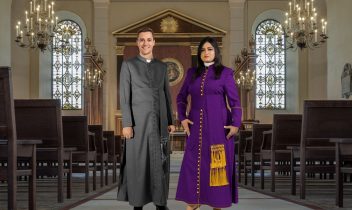
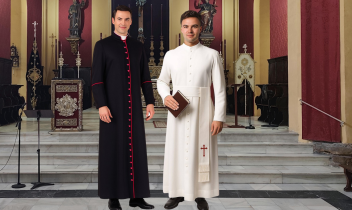
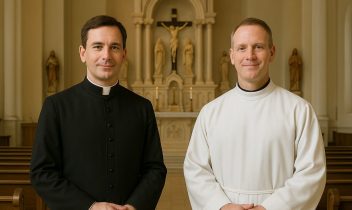
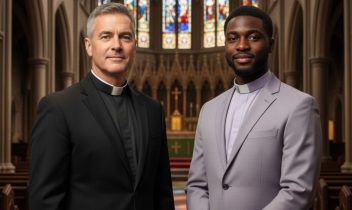
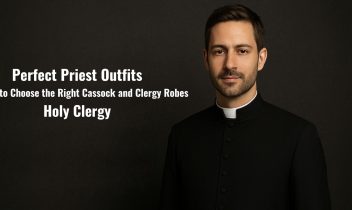
Recent Comments